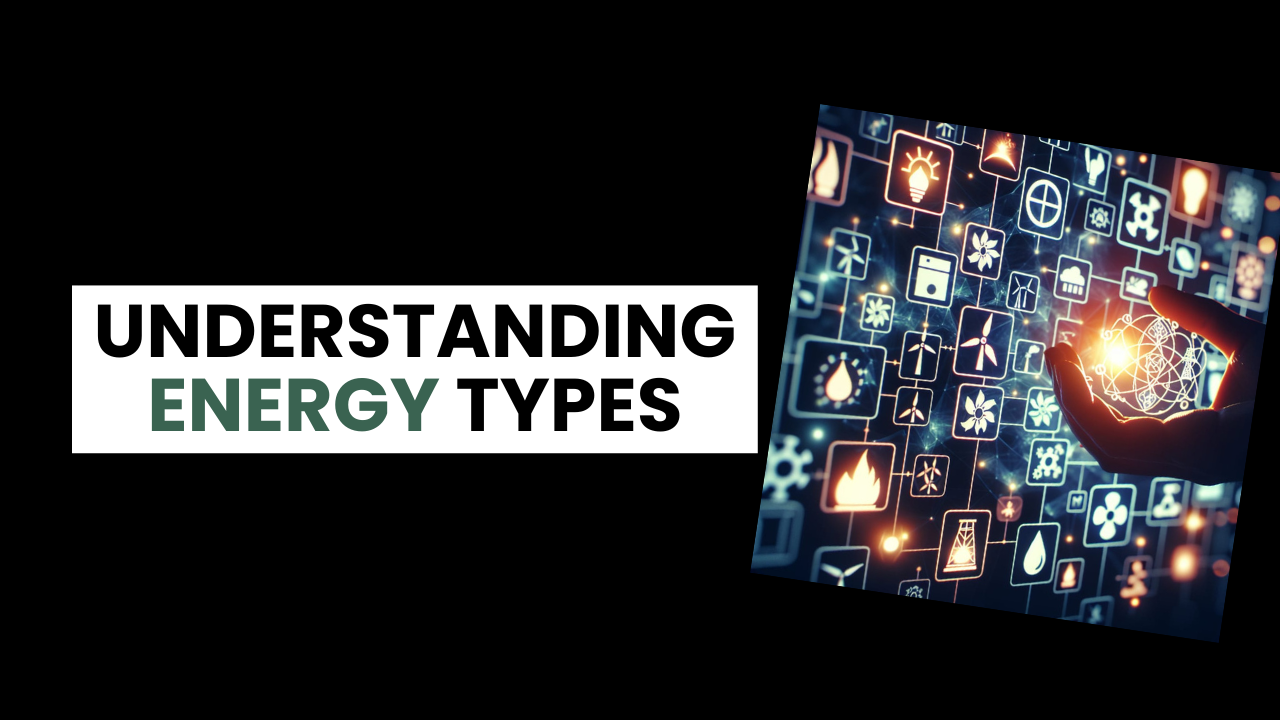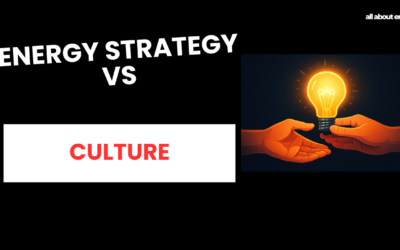Energy Explained
Written by Joe Wright
All About Energy is here to provide you with the information you need to manage and reduce your energy consumption, costs and to ensure you remain compliant with applicable legislation.
In this first blog post we’re going to start at the very beginning and talk about what energy is, the different types and how they affect your organisation. Look out of the ones that are present in your business, and stay tuned for the recommendations later on.
There are two essential types of energy—kinetic and potential—and knowing about them can help your business make informed, sustainable decisions.
What is Kinetic Energy?
Kinetic energy is the energy of motion. Any time an object moves, it has kinetic energy, and the amount depends on its speed and mass. The faster something moves or the heavier it is, the more kinetic energy it holds. You might wonder how knowing about kinetic energy relates to your organisational goals so I’m going to break it down into forms relevant to daily operations and energy management.
Types of Kinetic Energy and Their Impact on Businesses
- Thermal Energy: Thermal energy stems from the random movement of particles, which creates heat. From HVAC systems to industrial machinery, thermal energy is everywhere. Efficient thermal energy management, such as reducing heat loss or upgrading insulation, can significantly cut costs and help meet your energy reduction goals.
- Mechanical Energy: This is the energy associated with moving objects, whether it’s a fleet of vehicles, factory conveyor belts, or warehouse robots. Efficiently managing mechanical energy—such as optimising the maintenance of machinery or using energy-efficient motors—can improve productivity while cutting down on energy expenses.
- Electrical Energy: The energy created by moving electrons, electrical energy powers everything from office equipment, lighting, and essential machinery. Understanding and managing electrical energy use is critical for you to understand. Reducing peak demand and implementing energy-efficient lighting or appliances can yield substantial savings
- Magnetic Energy: Often used in electric motors and machinery, magnetic energy is tied to the motion of charged particles in magnetic fields. Choosing energy-efficient motors can reduce both energy usage and costs while aligning with net-zero ambitions.
What is Potential Energy?
While kinetic energy involves motion, potential energy is stored energy, waiting for the right conditions to be released. This stored energy can take various forms, each relevant to energy consumption and sustainability in your organisation
Types of Potential Energy and Organisational Relevance
- Chemical Energy: Chemical energy is stored in the bonds of molecules. Fossil fuels, batteries, and even the food we consume contain chemical energy. In your organisation, the type and amount of chemical energy consumed can heavily impact both carbon footprints and compliance. For instance, you can lower costs and emissions by switching to renewable fuels or using high-efficiency batteries.
- Elastic Energy: Found in compressed or stretched objects like springs, elastic energy is commonly used in manufacturing and industrial settings. Using materials with high energy efficiency or automating processes to reduce unnecessary compression can improve operational efficiency.
- Nuclear Energy: Though less common directly in most organisations, nuclear energy represents an important part of the overall energy grid, supplying electricity to businesses. If you’re looking to support low-carbon energy sources, exploring renewable energy procurement and grid-level energy supply options, solar and wind power, can be beneficial.
- Gravitational Potential Energy: This energy is due to an object’s position in a gravitational field, such as a loaded crane or water in a high-altitude reservoir. For organisations involved in logistics, construction, or heavy industry, managing gravitational energy efficiently can reduce energy waste and lower costs.
Why Understanding Energy Types is Key for your Business
Understanding these energy types isn’t just an academic exercise; it offers actionable insights that can directly benefit your organisation. Here’s why energy knowledge is essential:
- Cost Reduction: By understanding where and how energy is consumed, you can identify inefficiencies and adopt strategies to reduce energy bills. For example, replacing outdated machinery that leaks thermal or mechanical energy can yield substantial savings over time.
- Regulatory Compliance: For organisations in the UK, compliance with schemes like ESOS and SECR is mandatory. Knowledge of energy types can help you accurately report on energy use, identify areas for improvement, and take meaningful steps to meet or exceed compliance standards.
- Net-Zero Targets: Reaching net-zero goals often requires you to both reduce your energy demand and switch to cleaner energy sources. Understanding energy types allows you to strategically target reductions in carbon-intensive energy forms and explore low-emission alternatives, from renewables to biofuels.
Taking Action: How You Can Leverage Energy Insights
- Conduct an Energy Audit: Start by assessing how much of each energy type your organisation consumes. Understanding thermal, mechanical, electrical, and other energy forms allows you to see where resources are concentrated and where potential savings exist.
- Implement Energy Management Software: Monitoring software can track energy consumption across types in real time, providing insights that can help you act quickly and avoid peak costs.
- Invest in Training: Educating employees about energy types and their impact can create a culture of efficiency. For instance, employees trained in energy awareness are more likely to turn off unused equipment, identify energy leaks, or support energy-efficient upgrades.
- Explore Renewable Energy: Shifting from chemical energy stored in fossil fuels to renewable options like solar and wind where applicable, can help you meet net-zero targets and reduce reliance on non-renewable energy.
By embracing energy insights and focusing on practical, actionable steps, you can achieve significant cost savings, meet compliance obligations, and contribute to a more sustainable future. Energy is all around us—and understanding it may just be the key to unlocking better, greener business practices.
Watch the video for a quick overview of this topic:
You May Also Like…
Compliance Simplified
If you’re part of any of the mandatory compliance scheme like SECR, ESOS, or the many others out there, then you...
Why maintenance matters for energy management
When you think about improving your energy management, where does your mind go first? Upgrades? New systems? Cutting...
Creating A Culture Of Energy Efficiency
If your business is subject to compliance schemes like ESOS or SECR, you’re not alone. A lot of the companies I work...




